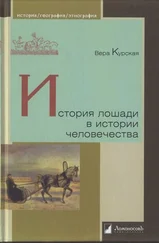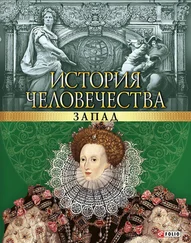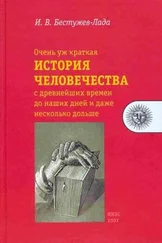6. Пантеизм Спинозы часто называют монизмом – «подходом, при котором существует лишь одна вещь или тип вещей». Нужно отметить, что Майкл Левин проводит четкую границу между пантеизмом и философским «монизмом» Спинозы и пишет: «Любое приравнивание монизма к пантеизму опровергается тем, что монисты порой отрицают любую божественность того “Единого”, о котором говорят» (P. 86).
Среди других философов-«пантеистов» можно назвать Плотина, Лао-цзы, Шеллинга и Гегеля. См.: Peter Forrest, Roman Majeran . Pantheism // Annals of Philosophy 64/4 (2016). P. 67–91.
7. Описывая нашу естественную склонность к «сущностному дуализму», когнитивный психолог Пол Блум отмечает, что это «естественный побочный продукт наличия у нас двух отдельных когнитивных систем, из которых одна оперирует материальными объектами, а другая – социальными сущностями». Paul Bloom . Religious Belief as Evolutionary Accident // The Believing Primate: Scientific, Philosophical, and Theological Reflections on the Origin of Religion. Jeffrey Schloss, Michael J. Murray (eds.). N. Y.: Oxford University Press, 2009. P. 118–127. Блум описывает ряд экспериментов, проведенных с детьми и свидетельствующих о врожденной вере в дуализм души и тела, в своей книге: Descartes’ Baby: How the Science of Child Development Explains What Makes Us Human. N. Y.: Basic Books, 2004.
Мало кто провел больше подобных экспериментов, чем Джастин Барретт. Он заключает: «Все больше специалистов по когнитивной психологии считают, что какие-то особенности развития человеческого мышления, судя по всему, заставляют нас полагать, что мы после смерти сохраняем некую свою часть и что это нечто существует уже сейчас… Почему именно вера в души и духов, которые переживают смерть, так естественна для детей и взрослых, сейчас выясняется: это сфера активных исследований и дебатов. Пока существует консенсус в отношении того, что дети с рождения верят в некую загробную жизнь, но не в отношении причин этого». См.: Justin L. Barrett . Born Believers: The Science of Children’s Religious Belief. N. Y.: Atria Books, 2012. P. 118, 120.
Джесси Беринг пытается дать когнитивный ответ на проблему нашего интуитивного представления о душе, которое связано с врожденной верой в жизнь после смерти. Беринг пишет: «Поскольку эпистемологически невозможно понять, каково это – быть мертвым, люди чаще всего приписывают мертвым такие типы ментальных состояний, отсутствие которых они не могут себе представить. Эта модель предполагает, что верить в жизнь после смерти естественно, а передача социального опыта лишь обогащает или обедняет интуитивные представления о загробной жизни». См.: Jesse M. Bering . Intuitive Conceptions of Dead Agents’ Minds: The Natural Foundations of Afterlife Beliefs as Phenomenological Boundary // Journal of Cognition and Culture 2.4 (2002). P. 263–308; The Folk Psychology of Souls // Behavioral and Brain Sciences 29 (2006). P. 453–498.
Abadia Oscar Moro, Manuel R. Gonzalez Morales. Paleolithic Art: A Cultural History // Journal of Archaeological Research 21 (2013). P. 269–306.
Adovasio J. M., Olga Soffer, Jake Page. The Invisible Sex. N. Y.: HarperCollins, 2007.
Albright William Foxwell . Jethro, Hobab, and Reuel in Early Hebrew Tradition. Catholic Biblical Quarterly 25/1 (1963). P. 1–11.
Allam Schafik . Slaves. The Oxford Encyclopedia of Ancient Egypt. Donald Redford (ed.). Oxford: Oxford University Press, 2001. P. 293–296.
Anonymous . Cultus Arborum: A Descriptive Account of Phallic Tree Worship, with Illustrative Legends, Superstitions, Usages, &c., Exhibiting Its Origin and Development Amongst the Eastern & Western Nations of the World, from the Earliest to Modern Times; with a Bibliography of Works upon and Referring to the Phallic Cultus. London: privately published, 1890.
Anthes Rudolf . Egyptian Theology in the Third Millennium B. C. Journal of Near Eastern Studies 18/3 (1959). P. 169–212.
Arapura J. G . Transcendent Brahman or Transcendent Void: Which Is Ultimately Real? Transcendence and the Sacred. Transcendence and the Sacred. A. M. Olson, L. S. Rouner (eds.). Notre Dame, Ind.: University of Notre Dame Press, 1981. P. 83–99.
Archer W. G. Review: Four Hundred Centuries of Cave Art by Abbé H. Breuil // Burlington Magazine 95/607 (1953). P. 343–344.
Armitage Simon et al. The Southern Route “Out of Africa”: Evidence for an Early Expansion of Modern Humans into Arabia // Science 331/6016 (2011). P. 453–456.
Arnold Bettina, Derek B. Counts . Prolegomenon: The Many Masks of the Master of Animals. The Master of Animals in Old World Iconography. Derek B. Counts, Bettina Arnold (eds.). Budapest: Archaeolingua Alapitvany, 2010. P. 9–24.
Aslan Reza . Thus Sprang Zarathustra: A Brief Historiography on the Date of the Prophet of Zoroastrianism // Jusur 14 (1998–99). P. 21–34.
––. No god but God: The Origins, Evolution, and Future of Islam. N. Y.: Random House, 2005.
––. Zealot: The Life and Times of Jesus of Nazareth. N. Y.: Random House, 2013. [Рус. изд.: Аслан Р. ZEALOT. Иисус. Биография фанатика. М.: АСТ, 2014.]
Assman Jan . The Mind of Egypt. N. Y.: Metropolitan, 1996.
––. The Search for God in Ancient Egypt. David Lorton (transl.). Ithaca and London: Cornell University Press, 2001.
––. Of Gods and Gods: Egypt, Israel, and the Rise of Monotheism. Madison: University of Wisconsin Press, 2008.
––. From Akhenaten to Moses: Ancient Egypt and Religious Change. Cairo: American University in Cairo, 2014.
Astour Michael C. Yahweh in Egyptian Topographic Lists. Festschrift Elmar Edel in Ägypten und Altes Testament. Manfred Görg (ed.). Bamberg, Germany: Görg, 1979. P. 17–19.
Atlas S. The Philosophy of Maimonides and Its Systematic Place in the History of Philosophy // Philosophy 11/41 (1936). P. 60–75.
Atran Scott. In Gods We Trust: The Evolutionary Landscape of Religion. N. Y.: Oxford University Press, 2002.
Читать дальше
Конец ознакомительного отрывка
Купить книгу












